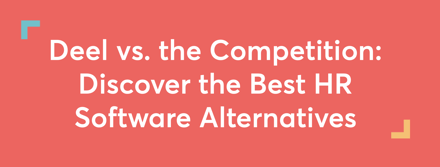Tackling talent shortage: How successful businesses are bridging the skill gap in 2022
- 19 May 2022
- 7 mins read
- Posted in
Your business is growing and fast. Your client base is expanding, you are generating a lot of data that you know could help you get more efficient – and you might even be thinking about setting up a team in a new geographic location.
But when you try to actually plan out your growth strategy, you hit a roadblock. You realize there’s no one in your team who can actually extract insights from that data, help you plan a way forward or even advise you on how to make your company infrastructure available in your new location.
What you are experiencing is a skill gap, and you’re certainly not alone (especially when it comes to data and cloud skills, but we’ll come to that!). In fact, 83% of employers are reporting skill gaps in their organizations today.
This is because the way we work is constantly changing. Technology is already an integral part of most job functions across industries, and this technology evolves at breakneck speed. This essentially means that your needs as an organization keep changing too. And every time it does, you need to find workers who have knowledge and expertise in these new technologies.
But this is easier said than done. One recent report noted that a vast majority of employers look to hire new talent in 2022 – but 58% say that finding people with the right skills remains the top challenge for them. This talent shortage throws up some very real consequences for businesses. It holds back organizational growth, hinders innovation and there’s a financial cost to this as well. By 2030, the U.S. alone is expected to experience a loss of $8.5 trillion, just because of talent shortage.
5 common skill gaps that organizations are facing
So let’s look at some of the most common hard skill gaps that organizations are struggling to bridge – and the reasons for the gaps being so prominent in these areas.
-
Cloud computing
Cloud computing touches every aspect of business today – be it creating customer satisfaction, bringing down costs, operating more flexibly, scaling up or even reducing carbon footprint! Cloud computing professionals help organizations implement their end-to-end cloud strategy – from designing to delivering and maintaining their cloud architecture on platforms. Cloud roles include cloud architects, developers, administrators and cloud engineers among others.
Cloud skill shortages are unsurprising, since it is not easy to train to become an expert in these roles. A professional in the field would need to have cloud service platform knowledge, a good understanding of APIs, database management, network management and DevOps. And of course, they would need to develop expertise in programming languages like Java & Python.
It takes time to train for and develop these skills – but rapid adoption of cloud technology is causing a huge demand that outpaces supply. Cloud computing is thus the second most difficult area to hire in, according to managers globally.
-
Cloud security
High adoption of cloud infrastructure automatically means there is a greater need for cloud security experts. These professionals help businesses protect their cloud resources from a variety of threats ranging from data loss and misconfiguration to targeted attacks by cyber criminals. Roles under this function include cloud security architect, security engineers, auditors, testers and more.
These experts need an in-depth understanding of cloud computing as well as information security, application and network security, and compliance. They require experience in programming, development, ethical hacking and need to know certain programming languages like Python and Ruby. Here too, there is a severe shortage and cloud security jobs are reported to remain open for 2.5 months before getting filled.
-
Artificial Intelligence
AI enables computers to autonomously learn from constantly updating information, and use the knowledge to solve problems. Businesses use AI across multiple spheres like advertising, marketing, fraud detection and customer service to name a few. But skilled professionals are needed to be able to design and execute AI initiatives – and 40% of organizations report having trouble finding this talent.
One needs to obtain a vast variety of skills and domain knowledge before they can work as an AI programmer. They need to acquire a good understanding of Big Data technologies, machine learning algorithms, statistics, probability – and also know programming languages such as Python, R, Java, C++. Artificial Intelligence is a newer domain, and until recently, learning and training resources were not too easily available, let alone formal education opportunities. That is one of the main reasons why there’s a scarcity of AI talent in the market today.
-
Data analytics
All successful businesses today run on data – and there’s more of it available to them than ever before. The ability to process customer data and extract insights is invaluable for organizations. It can help them target customers more efficiently, understand their needs and stay relevant with their offerings. It can also help businesses improve their own processes by identifying areas of inefficiencies and making more accurate, data-driven decisions.
This is just what data science professionals do – they use programs and scientific methods to crunch large volumes of data and offer these insights. And to do this, they need to know SQL, machine learning, statistical programming, probability, statistics, data management, visualization, econometrics among other skills. This is a pretty broad spectrum of skills to acquire – and the number of professionals who have all the relevant domain knowledge is not nearly enough to meet the demand.
-
UX design
This is the skill you need to ensure that all your digital assets (websites, apps and software etc.) are designed to optimize your user experience. A badly designed interface is frustrating to use, and a modern user is unlikely to keep coming back to it, especially when they have hosts of other options. Smart UX design thus, not only enables you to grab customers’ attention in your business but also retain their loyalty.
Good UX designers will come with research, prototyping, wireframing and visual design competencies. They will have some knowledge of information architecture and maybe even have a basic understanding of app development. Most business owners are realizing that it is not so easy to find someone with this unique combination of creativity and enterprise capabilities.
How can you fill these skill gaps?
As a business operating in this day and age, these are some functions you can’t really afford to skip. So what do you do when you notice these skill gaps in your organization? Here are a few options open to you:
-
Hiring new talent
This is the most obvious solution that most businesses pursue. But as we saw above, there’s a severe shortage of certain skills in the market, so you might find yourself having to compete with a lot of other employers to hire the talent you require. This is where you will need creative recruitment strategies.
You will need to find out what perks and benefits employees are looking for, and craft a package that includes these offerings. For instance, younger workers seek balance and control over their own schedules – so having flexible work policies will help make your offer more attractive to them. Once you do manage to hire them, remember to focus on retention policies too. Don’t forget, your new hires have skills that are in high demand, so they are likely to be headhunted, and may find it easy to switch to other companies who are offering better pay or benefits. Unsurprisingly, talent retention has been reported to be one of the top 3 priorities among global leadership (interestingly, it featured right after technology concerns).
-
Reskilling existing employees
In the face of talent shortage, many organizations are now reskilling existing employees to bridge the skill gaps. They are tying up with educational institutes and EdTech platforms to offer free courses and tech training sessions to their employees. According to this McKinsey survey, 69% of respondents say that their companies are reskilling now more than they did before the pandemic hit.
There are several advantages to this approach. Your existing employees are already familiar with the work that you do, your organizational culture and your internal processes, so you will save time, effort and onboarding costs. Moreover, as business strategy becomes more talent-focussed, this is a great way to retain good employees while filling skill gaps – most employees value upskilling opportunities and are more likely to stay with an employer that offers this.
-
Redeploying employees
This option too, will require you to invest some time and resources to reskill your workforce. But it might be a viable way forward if some of your workers already have some of the skills required and are missing just one or two crucial ones. In these cases, you might want to offer them the relevant training and redeploy them to the new roles altogether.
This is a good option if they are currently in roles that your organization no longer requires – or roles that are experiencing no talent shortage and you can easily hire other professionals to replace them. 46% of people surveyed have noted increased instances of talent redeployment in their companies over the last few years.
-
Encourage education in STEM (Science, Technology, Engineering and Mathematics) fields
This is more of a long-term solution and would work if you foresee a need for certain skills in your organization in the next few years. In this case, you can help create the talent you know you will need in future by encouraging education in the relevant fields.
Some employers are doing this by partnering with colleges and universities to offer internships, scholarships, recruitment opportunities and pre-placement offers. Other organizations (notably AWS and Microsoft Learn) are using their own resources to make tech courses available to students, women, veterans and other untapped talent groups.
There’s an easier way to fill skill gaps
There is one option that you may not have considered but it may work out to be much easier, quicker and more efficient than the 4 ways discussed above. You can work with freelancers and contractors to bridge the relevant skill gaps. Here are a few reasons why this option often proves more viable.
-
It widens your talent pool
When there’s a global talent shortage (especially when it comes to tech talent), it doesn’t make sense to add geographical restrictions to your hiring process. The pool of people with the right skill sets is already small enough!
Working with freelancers and contractors enables you to hire from anywhere in the world. It also gives you access to the most relevant group of people who might have the skills you're looking for. For example, younger Millennials and Gen Z workers are more likely to have the most cutting-edge tech skills – and these workers exhibit a strong preference for remote, freelance work.
TalentDesk can help you find the right talent, anywhere in the world. Our database enables you to source talent globally, and you can simply filter and shortlist workers with the exact skills you are looking for. Global onboarding and cross-border payments too, become a breeze with our seamless, automated processes.
-
It offers flexibility
Technology evolves fast – and that’s not a trend that’s about to change anytime soon. That means your needs might change too, a few years down the line, and the very skills that you are desperately seeking right now might become obsolete in future. So if you are looking for certain skills to fulfil a short-term requirement, making a permanent hire might not be the best option for you.
Freelancers and contractors enable you to work more flexibly. They give you access to the skills you need, when you need them. You need not continue paying for them long after your requirement has ended – and you do not have to worry about the cost of redeploying or having to let them go.
-
Managing them is not as challenging as once believed
One of the top reasons why employers did not consider freelancers and contractors in the past, was the alleged challenges of managing them. The lack of control over how and when external workers work made many employers uncomfortable.
But many skilled independent workers choose flexible work as a way to build their own career and reputation – so they are highly professional and efficient. Moreover, with flexible work becoming as widespread as it is today, you now have sophisticated software and solutions to manage them.
Thus, looking for ‘traditional’, permanent employees is not the only way to bridge skill gaps today. A simple change in mindset can open up a very rich pool of external, but immensely experienced talent. With a redefined concept of the workforce, and the right tools at your disposal, your business can end up reaping fantastic results – and the talent shortage becomes only a myth.

Sanhita Mukherjee
Speak to us to find out how we can help you find the right people to join your workforce
Related articles
What is a Vendor Management System (VMS)? A Complete Guide
What is a Vendor Management System (VMS)? A Complete Guide
Discover what a Vendor Management System (VMS) is and why it’s essential for managing your workforce. Streamline vendor management with ease.
Best Contractor Management Software for 2025
Best Contractor Management Software for 2025
Discover the best contractor management software to streamline workflows, ensure compliance, and simplify payments. Manage global contractors with ease.

Mastering Influencer Management: Strategies for Effective Collaboration
Our guide to influencer management, exploring strategies, tools, and tips to create successful influencer relationships and enhance your marketing impact.

10 Reasons Why You Don’t Need a Contractor Management System
Discover 10 hilarious reasons why you absolutely don’t need a contractor management system - because who needs efficiency, happy freelancers, or sleep?

What Is Contingent Workforce Management Software?
Discover how contingent workforce management software enhances cost savings & access to talent. Learn about essential tools, compliance & best practices.

Deel vs. the Competition: Discover the Best HR Software Alternatives
Discover the best Deel alternatives for global HR management. Compare features, pricing, and reviews to find the best solution for your global workforce.
The Ultimate Guide to External Game Development
The Ultimate Guide to External Video Game Development
Explore our ultimate guide on external game development, covering crucial strategies, tools, and tips to manage freelance developers efficiently.

What is a 1099 employee?
This is a complete guide on 1099 employees. Learn how to classify your workers, improve finances, boost employee morale, and enhance your reputation.

6 Reasons Why You Should Hire a Freelance Social Media Manager
This is a guide on the benefits of hiring a social media manager. Learn how to save time and enhance your social media reputation from expert insights.
Scalable Workforce Solutions for Digital Marketing Agencies
Scalable Workforce Solutions for Digital Marketing Agencies
For marketing agencies, levels of work can vary significantly. How do you scale your team to meet client needs while avoiding overcapacity at other times?
